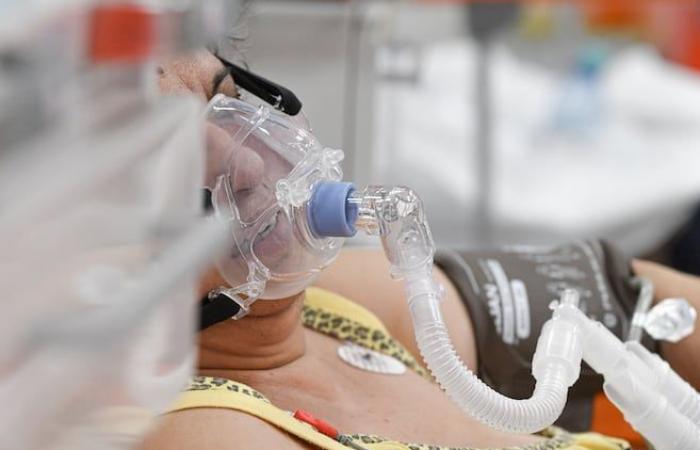Millions of patients receive oxygen every day, whether in hospital or at home. The device, called “Free O2,” uses artificial intelligence to adjust the oxygen flow every second according to the person’s needs.
This tool was developed at the University Institute of Cardiology and Pneumology of Quebec – Université Laval (IUCPQ). It was approved by Health Canada in 2019.
At Lakeshore General Hospital in Montreal, tests of the device that were carried out in the intensive care unit are promising.
The device made it possible to reduce the average length of hospitalization for patients from 40 hours to 11 hours.
In intensive care, nurses and respiratory therapists see patients every hour, whereas on other floors this period may be more spaced out. “Despite increased surveillance, we had a gain in patients who saw their length of stay reduced substantially,” underlines Kevin McElreavy, head of respiratory activities at Lakeshore General Hospital.
The CIUSSS de l’Ouest-de-l’Île-de-Montréal continues to integrate the “Free O2” machine into other establishments. In January, LaSalle Hospital acquired this technology.
The Ministry of Health and Social Services has announced that three other sites are serving as pilot projects for this device, namely the CHUM, the CISSS Montérégie-Centre and the CIUSSS du Saguenay–Lac-Saint-Jean. The goal is for health establishments to successfully demonstrate the value of the technology before introducing it on a wider scale, the ministry specified in a written response to The Canadian Press.
Outdated traditional method
“Free O2” aims to replace the ball flow meter, a technology invented more than a century ago that requires significant staff monitoring.
“Giving oxygen to our sick patients is something we have been doing for over 100 years, but the way we do it has barely changed. That is to say that it was done manually, we connected the oxygenation via a cylinder or a system channeled directly to the patient with an adjustment made by a therapist,” detailed Mr. McElreavy.
Instead of manually adjusting the amount of oxygen given to the patient, the new device continuously measures the patient’s oxygen saturation and adjusts it. This limits the risk of complications linked to hypoxemia (low oxygen level) and hyperoxia (excess oxygen). The number of under-oxygenated patients fell from 17.2% to 2.5%, according to tests by the CIUSSS de l’Ouest-de-l’Île-de-Montréal.
Mr. McElreavy specifies that when respiratory distress occurs, staff will mobilize and provide appropriate care to the patient, avoiding the possibility of death. However, he believes that we should not neglect the distress that the patient experiences when he cannot breathe well.
The oxygen therapy device assisted by artificial intelligence is also an asset in the current context of shortage of respiratory therapists and nurses. “If the professional has 30 patients to take care of, he cannot see them all at the same time, he must see them one after the other. Necessarily, between now and 1 a.m., it’s a safe bet that the patient’s oxygenation needs will have changed,” says Mr. McElreavy.
Considering that the tests at his hospital were done in intensive care where there is increased monitoring of nurses and respiratory therapists, Mr. McElreavy believes the benefits of the device have greater potential in the emergency room or other floors where it there is less medical supervision.






